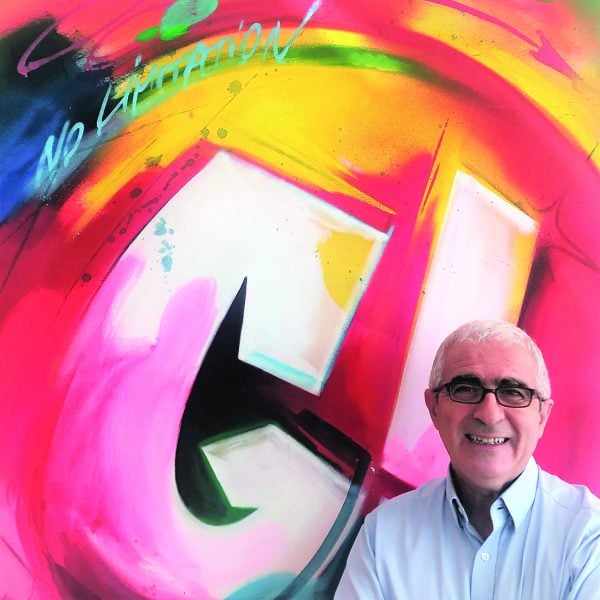By Yves-Michel Gabay, managing director, Gamned MEA.
 Covid-19 unexpectedly reshaped our daily lives. At a time when our mobility is limited, companies focus on digital to communicate, sell and entertain. While 2020 is coming to an end, what can we expect from 2021? What trends do we have to consider when planning our advertising strategies for next year? Here is my opinion in five major key points:
Covid-19 unexpectedly reshaped our daily lives. At a time when our mobility is limited, companies focus on digital to communicate, sell and entertain. While 2020 is coming to an end, what can we expect from 2021? What trends do we have to consider when planning our advertising strategies for next year? Here is my opinion in five major key points:
1. More transparency for brands.
60 per cent of Gen Z proudly claim they want to change the world and rethink their consumption through the prism of digital. They are sharing their opinion on social media, scanning products and analysing their composition, selling their clothes and used goods, and discovering new brands and products. Covid-19 saw a new generation rise: Generation N (for “new economy”). For this generation, transparency is a major factor as it builds up trust, which ensures engagement and loyalty. If transparency is key for brands, it’s also expected from digital marketers.
2. A more ethical use of data
Over the past years, using data has been a common practice in digital marketing. Google and Facebook won over the market by offering many targeting options: socio-demo, context, intentions, lookalike… The arrivals of the General Data Protection Regulation and the California Consumer Privacy Act as well as the coming end of cookies have changed the game. The collection of data now requires consent from an educated consumer, so it’s fair to say that we have less data but better data. The marketing Holy Grail is first party-data. Trustworthy brands and media will still be able to collect data easily, and artificial intelligence offers predictive analysis in the blink of an eye. The new generation of consumers are perfectly aware of how the internet works and constantly question themselves about the use of data, so it’s time to make a more ethical use of data.
3. Artificial Intelligence (AI) will boost performance
Artificial intelligence and machine learning allow us to customise, follow and optimise hundreds of media buying strategies simultaneously. Not only is it fast but it also allows us to anticipate the behaviour of each person – which is impossible for a human brain. That’s why AI will be tomorrow’s new must-have for marketers. AI is amazing in terms of performance as it enables us to address customers with the best message possible. For a brand, the benefit is huge and immediate: less waste and a better acquisition rate. Today it’s possible to broadcast personalised banners and videos on a very large scale. Spotify is one major brand that already make great use of it to push customised musical preferences to its users. At a time when we all want to feel special, personalisation is remarkably effective.
4. Video or nothing
Video is everywhere and impossible to ignore on all social media networks. More than 8 billion videos are streamed daily on Facebook, and 5 billion on YouTube. One person in three buys a product after seeing a video, which explains why ad spending on this format keeps on increasing. The key to a good video campaign is to make it short and impactful. A study by Vivendi Brand Marketing revealed that your target loses its interest for your content after only eight seconds. Another interesting trend is programmatic TV, which comes together with over-the-top (OTT) and addressable TV, even though the latter is not yet available in the region. It is getting bigger and bigger in the US and Europe, opening a new platform of expression for smaller businesses.
5. The ongoing power of Influencers
If anyone understands the need for brands to create experiences for their audiences, it’s influencers. If some international brands count on major influencers and their billions of followers, it’s not a path that everyone is keen to follow. Proximity is trendy and brands multiply their collaborations with “micro-influencers” and their very engaged communities. They are now aware that quantity doesn’t necessarily mean quality and that they have a better chance of conversion with audiences who truly trust and value the opinion of the influencers they follow. Companies like Ykone, have been developing this approach for years now. Also, it is now possible to use the content produced by your influencer through media campaigns to extend their reach. Let’s keep in mind that word-of-mouth has always been the most effective communication technique – with influence marketing and programmatic, we are only making it digital.
In 2021, programmatic advertising will probably exceed 68 per cent of digital ad spend. But it won’t be AI, a new social media network or influencers who will make the next year. It’s the consumers. They will continue to be demanding and ask brands for more: more value, more engagement, more honesty. So, if you only remember one thing, it’s to remain aware and stay agile.









